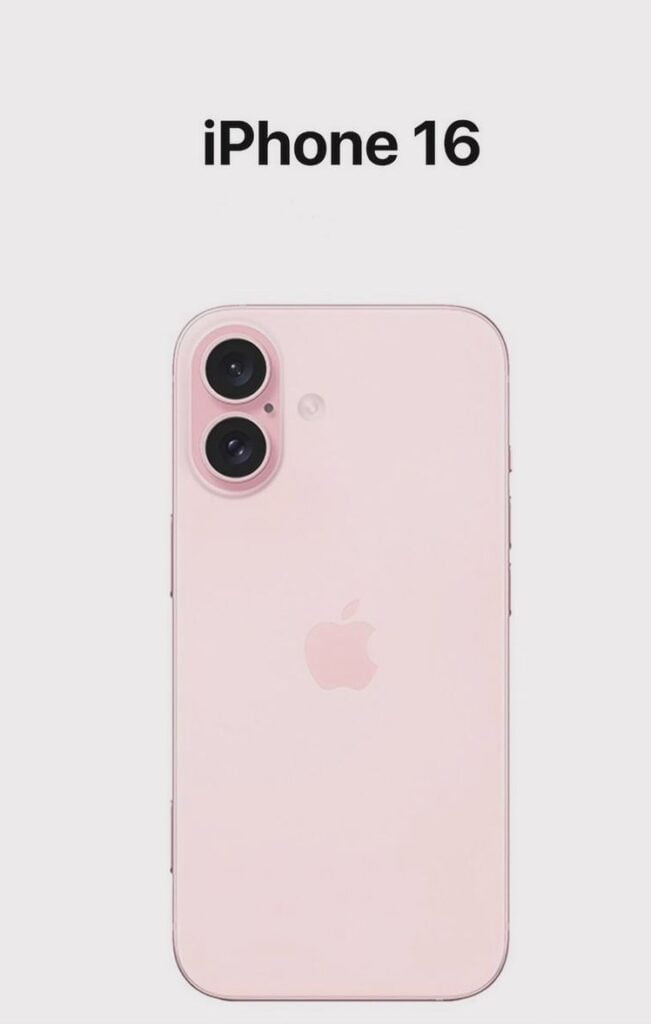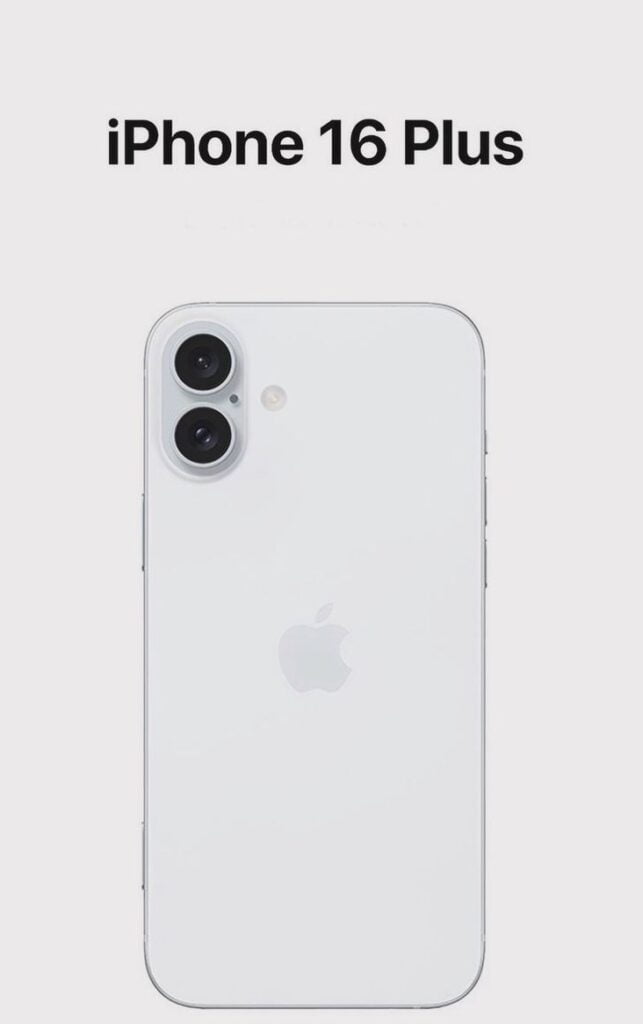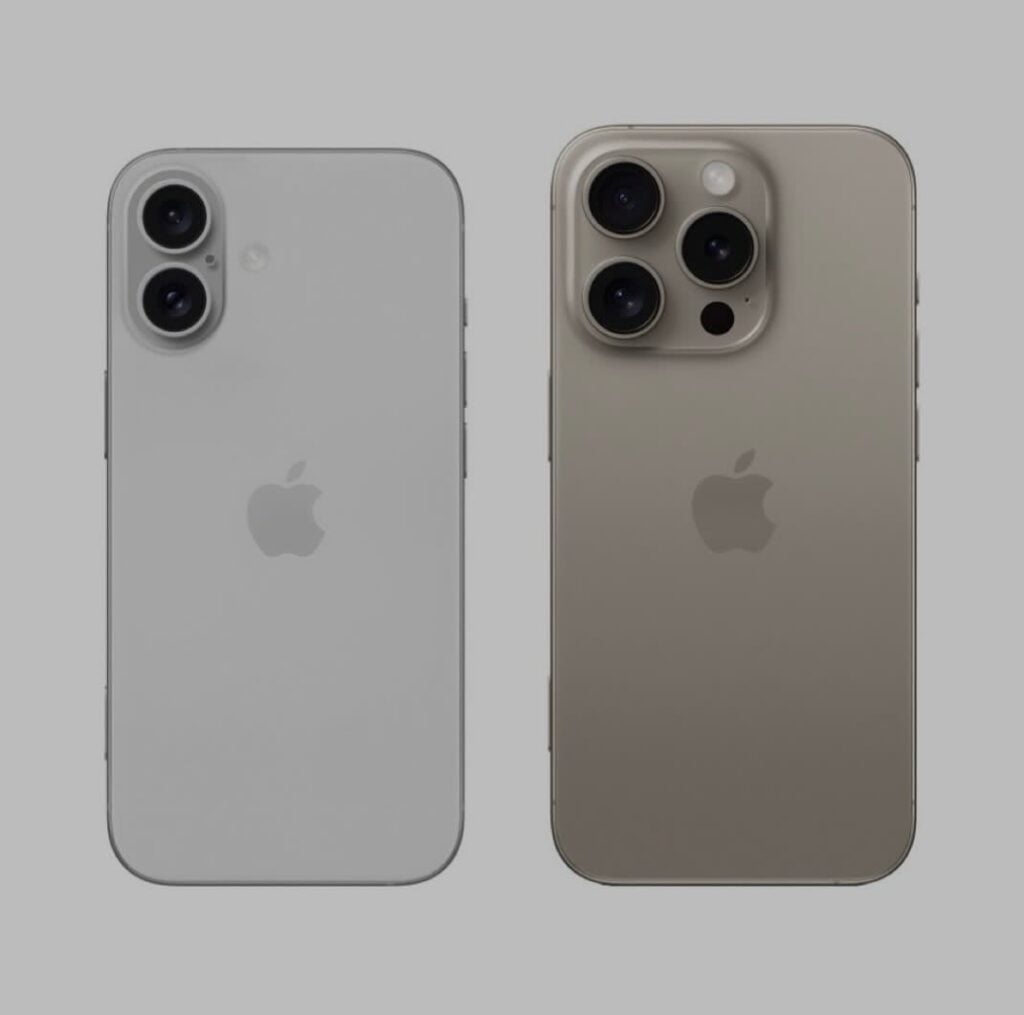Today, we are going to talk about the Apple iPhone 16 and 16 Plus, as well as the iPhone 16 Pro and iPhone 16 Pro Max. So buckle up, we talk about the good, the bad, and the ugly. So, let’s start with the normal 16 and 16 Plus.
iPhone 16 and 16 Pro Review
iPhone 16 and 16 Plus

Design and Display
Aesthetically, aside from spicy new ultramarine color, 16 and 16 Plus are basically the same as the iPhone 15s, including the same size screens. So the base iPhone gets a 6.1-inch screen, and then the Plus is basically the same phone but stretched out to a 6.7-inch screen, with a bigger battery.
There is an upgraded ceramic shield covering those screens though, which Apple is saying is 50% stronger than the first-gen ceramic shield, which is a large number, and everyone wins when it comes to durability improvements.
But then they didn’t really give any detail on specifically how that 50% was measured, so it will probably be some really niche test that’s been done, and the day-to-day difference won’t be nearly as transformative as that.
Camera Changes
One visual difference that you absolutely will notice are the cameras. They’ve gone from the boxy, squarer camera arrangement on the 15s to now a straight line down the phone, kind of exactly how they used to be on the old iPhones.
It really does make people feel like we’re on some sort of roundabout when it comes to iPhone design, where instead of just deciding that one thing is better and sticking with it, we’re actually just rotating between the different options to keep whatever’s new feeling different.
However, the reason Apple is giving is that they’ve made the cameras like this again so that the main camera and the ultrawide can work together, kind of like your eyes, to be able to record spatial video that you can watch on the Apple Vision Pro.

Camera Upgrades
There are slightly better cameras than last year because the ultrawide has now been given autofocus, which means when you go super close to something, your phone can still keep it in focus, which is not a new feature.
The Pro phones have been able to do this for a while now, but Apple does this dance every year. The Pros will always come with some new and exciting hero feature that the normal phones don’t have, but then as soon as the Pros get the next hero feature, then the normal ones are allowed to have the old stuff, which actually makes sense.
This means that Apple can differentiate their more expensive offerings, but also then if you don’t want to pay Pro prices, you can still get the features you want by waiting another year. And in the same vein, you now also get the action button that last year’s Pro phones had, which is pretty uncomfortably positioned. But that’s not to say that one hasn’t seen hundreds of fascinating ways that other people have used theirs.
There’s obviously the basic stuff like using it to take photos, but then also one has seen people use this button to specifically turn on a dim flashlight that they can use at night. One has seen people use it to activate their insulin pump. One has seen people use it to make fart noises on command. So it’s up to you what you make of it. Now, the only other somewhat camera-related feature is this, the new camera control button.
So two separate new buttons in one year on an iPhone. How many people had that on their bingo card? One definitely did not. So it’s a new button on the right-hand side, completely dedicated to camera stuff. And one will give them some credit. They are getting a lot of functionality out of this one button. So tapping and holding will bring up the visual intelligence feature, which is not yet live, but it’s kind of like Google Lens. It’s a way to analyze information using your phone’s camera.
So like save the details of an event poster or find out what type of dog is in front of you, which, meh. One just feels like we’ve seen so many companies do things like this. But then, hey, one guesses there is still room for a company to do it really well. Time will tell if that is this. But then the other side of this camera control is photography stuff.
So one press can open the camera app and then it can actually detect two stages of press, kind of like the trackpads on a MacBook, if you’ve ever used one of those. So you can light press to start using it to be able to zoom in and out by swiping. But there’s actually a lot more because then you can double light press to bring up this sub menu, which basically lets you select what you want the swiping to control..
So it doesn’t need to be zoom. It could be the exposure of your shot or the different photographic styles, for example. But honestly, it is not clear why this exists. It feels like a really good feature, but for like 2% of iPhone users. For those who have just started using the brand.
One of the things they showed in the presentation was how you’ll be able to use this button to control focus by lightly holding down on it, you know, just like you would with a proper camera shutter button. But when was the last time you actually wanted to manually focus your phone? There’s already like 100 pieces of hardware and software making sure that your subject is in focus automatically.
We’ve actually been programmed out of needing to do that. There’s the fact that phones are becoming more and more portrait devices. This camera control, while it does work in portrait, is very clearly designed for landscape use. It’s really fiddly and a little painful to reach for when your phone is upright.
Obviously, the camera control button does the camera side of things better, but it just feels like a really weird un-Apple thing to add yet another button that somewhat overlaps in functionality with what’s also just been added. And that’s it for cameras on the normal iPhone 16s.
There’s actually pretty huge camera upgrades to the pros, but it feels like the main changes here are actually the battery, the power and Apple intelligence. So the battery is bigger. That’s actually all they said at the event. They said it will be a big boost, which is a technical term.
In terms of power, it’s quite cool because we’re actually jumping forward two generations in terms of the chipset. The iPhone 15s have the A16 chip, the iPhone 16s have the A18 chip, which means 30% faster CPU, 40% faster graphics and 100% faster machine learning AI stuff, all with more efficient construction, which means the chip will use quite a bit less power for equivalent tests.
However, for today’s fairly stable smartphone market, these are big improvement numbers. And considering that these aren’t pro phones, the gaming experience is very impressive, which is also helped by a new thermal structure on the inside of the phone that gets rid of heat, allowing for 30% better sustained performance. There is no beating around the bush. If there’s one thing that Apple has made very clear about this generation of iPhones, it’s that they want them to be known as the AI generation.
There is a report recently that said 300 million iPhones around the world have not been upgraded in four years. So there’s a ton of people out there who are due an upgrade, but are likely holding off until it feels like a big turning point moment. And Apple wants now to feel like that turning point moment with Apple intelligence.
So what’s it gonna let you do? Well, for starters, there’s a base layer of Apple intelligence sprinkled throughout iOS here. Things like if you go into an email app, instead of the text by default, just being the first few lines of whatever the email was, it’ll now summarize the entire email’s content.
Things like cleanup to erase distractions from your photos, which is not something we haven’t seen on other phones, but it does work very quickly and also allows what it thinks you need to see to still come through. It’s kind of like a lower risk version of do not disturb.
In terms of the actual output, it doesn’t feel like Apple intelligence is doing much that others aren’t already doing. All these features, like being able to proofread the messages you’re writing and rewrite those messages in another tone, it’s all fine, but it’s all been done. Apple intelligence, like basically every other phone company’s AI right now, is not yet able to match that texting tone.
But one big thing, Siri, is finally getting Apple intelligence, which is gonna make it a lot smarter. So the upgraded Siri should be able to rely much less on that and be much more able to directly answer the questions you’re asking it. And also completely understand the context of the last thing you asked it when you’re asking continuous questions. You would go as far as to say that Siri has been the weakest pillar of iOS for quite a while now.
Apple Intelligence, similar to the other features mentioned, is not expected to be released until later in the year, which creates a situation comparable to a Google Pixel event, where the product is launched first and the features follow later. This approach reduces some of the anticipation, particularly for an event that heavily emphasizes AI features. The delay is likely due to the significant complexity of perfecting these features, along with the potential negative consequences if they are not implemented correctly.
As for the base iPhone 16 models, they represent a solid all-around upgrade, though not groundbreaking. The presentation focused on various functions of the phone, but it becomes apparent that many of these features were already present in last year’s iPhone 15 models. The distinction between new and existing features seems deliberately unclear, and when the attention is placed solely on what is truly different, the changes are not as extensive.
The screens still feature a 60Hz refresh rate, which may cause them to feel less responsive compared to other phones in the same price range. However, it is reasonable to expect that significant advancements will be reserved for the Pro models going forward. Apple is likely to introduce cutting-edge technology in the Pro versions first.
iPhone 16 Pro and 16 Pro Max

New Display and Performance
Now, transitioning to those models, the iPhone 16 Pro and iPhone 16 Pro Max are notably well-designed phones.
From the back, there is little to distinguish except the new desert titanium color and, well, how many times can you remix a shade of gold? It looks well-thought-out but perhaps too safe. That’s from the rear; from the front, it’s more obvious an upgrade with larger displays.
Size has bumped up from 6.1 inches to 6.3 on the smaller Pro, while the Pro Max is up from 6.7 to 6.9. Pretty good work, given much of that size increase comes from further shrinking the borders around the screen; these devices look eminently suitable for 2024.

Battery, Chip, and Performance
These might even have the slimmest uniform borders of any mainstream smartphone. It should, however, be clear that while the new iPhone does not change personal attributes or success, the reduced bezel adds to a state-of-the-art look while allowing large viewing areas in both compact and larger models. Apparently, phones boast screens comparable in size to past Android tablets.
The Pro models also have upgraded batteries, though few details were given beyond mentioning faster wireless MagSafe charging and claiming this is the best battery ever in an iPhone. Further, more extensive testing will be needed to check these claims.
A new chip is here, too. While the base iPhone 16s have the A18, the 16 Pros boast the A18 Pro, an upgraded variant with enhanced cooling that allows for more functionality, especially when it comes to the camera.
The main camera is still 48 megapixels, but there’s a new sensor here that captures info more quickly than before. The two major outcomes of this are:. With zero shutter lag, the cameras will shoot photos for an even quicker shot on an already fast camera.
Microphones and Audio Enhancements

Another noteworthy improvement in the Pro models is that it support faster video recording: While last year’s models could shoot 4K at 60 frames per second, the new phones can shoot 4K at 120 frames per second and enable slow-motion playback of high-resolution videos. It’s almost as if Apple is saying that users can default record in 4K 120 FPS and then select post-capture to playback at normal or reduced speeds.
This recording experience is seamless, well-done, but as a default, it would take up more storage than the 128GB still available as the base option on the smaller Pro iPhone.
The ultra-wide camera went from 12 megapixels to 48, matching the main camera. This further enhances the photography experience; users can be sure that all cameras on the phone are capable enough, with no need to choose which camera is superior over another. Moreover, macro photography was improved with the upgrade of the ultra-wide camera. It can reach up to 48 megapixels for shots in macro photography.
Now, this has been updated by adding four studio-quality microphones to phones, enhancing many functions. The more microphones there are, the better the audio quality in videos and the more responsive the voice assistant features, such as Siri.
Further, new audio mixing modes allow the user to center frame audio on a specific source of audio, such as the ability to isolate voices or bring ambient sound into a video. This is one of many advanced new software features, including real-time color profile control in photos.
Impressive, perhaps, from a technical standpoint, but it’s a bit daunting-mostly for the casual user. These innovations are more for professional photographers and videographers than for those who would use their phones for everyday, point-and-shoot photography. The point-and-shoot experience stays solid, but there doesn’t seem to be a large amount of focus on improving it any further.
There is one welcome addition, at least: the smaller Pro inherits the 5x optical zoom camera that’s previously been the preserve of the Pro Max. That puts it among the smallest phones with that sort of capability, which generally tends to be the preserve of larger ones. Apple has done it by using a tetraprism that bounces light around multiple times inside its compact space, rather than taking the more common method of arranging cameras vertically within the phone.
Read Also: How To Connect An IPhone To A Smart TV
This is where ESR’s new MagSafe Stash Stand Case comes into play in protecting those advanced cameras. It fuses protection for cameras with a built-in phone stand and allows faster MagSafe charging since it has slim features. The cases also meet military protection standards, offering robust durability.
Conclusion: Worth the Upgrade?
The takeaway is straightforward: the new iPhone 16 Pros are feature-packed. There are fewer hardware improvements than usual, and it seems Apple is relying on Apple Intelligence for much of the innovation.
However, since Apple Intelligence is not yet fully there and doesn’t currently seem groundbreaking, the true test will be how much better these phones improve upon the basics: display, battery, camera, and microphones.
More will be gleaned from testing, but the new features offer hope, especially for the professional user.